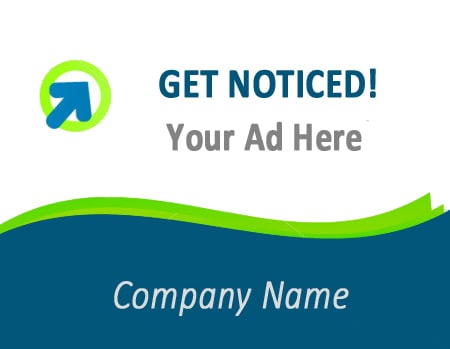
Advertising with images has the potential to communicate complex messages in the quickest and most efficient way possible. I’m sure you’ve heard the common phrase, "A picture is worth a thousand words". But are they the right words? Imagery and colors trigger a plethora of emotions in each person, and if used incorrectly, may yield negative results. However, if used properly, they can be very beneficial.
Studies have shown that the human brain processes visual images 60,000 times faster than text. According to Marcel Just, Director of the Center for Cognitive Brain Imaging at Carnegie Mellon University, "mother nature has built into our brains the ability to see the visual world and interpret it." So to meet that basic human instinct, we’ve outlined some best practices to keep in mind when creating your image display ads.
1.Be Relevant
Ad relevance is absolutely the number one factor of display advertising. You will have the most success if you target your ads to relevant and ideal customers on the most appropriate pages. All elements of the ad need to be connected. For instance, if the ad text is about a shoe sale, use a picture of a shoe. Also, make sure your ad is visually similar to the page on which it will be seen. Food ads go on food websites, clothing ads go on apparel sites, and so forth. This might seem like a no brainer, but many company’s get slightly overzealous and want to blast their messaging to every corner of the web. If your ad message isn’t relevant to the user, they’ll just browse on by.
2.Brand Consistency
Maintaining brand consistency is important to all aspects of your business. It’s critical in advertising. The ads you create need to match the look and feel of your website, and should be consistent between the ad itself and the landing page. Being on brand is even more important if you’re creating ads for remarketing or retargeting purposes, as it needs to act as a continuation of a visit to your site. This makes your brand instantly recognizable. So develop a "voice", flaunt your logo, and always make sure your information is current!
3.It’s A Colorful Life
The concept of color psychology has become a hot topic in marketing and design. The truth of the matter is that color is too dependent on personal experiences to be translated into specific feelings. However, research has shown there are psychological effects colors can have on the human mind. In a study called Impact of Color in Marketing, researchers discovered that 90% of snap judgments made about products were based on color alone. Therefore, strategically choosing your image ad colors will help you achieve your goal. Check out this Color Emotions Guide to help you select your color scheme. .jpg?sfvrsn=e20ba0d4_4) However, if you are targeting a specific site for your advertisement, consider utilizing the color theme of that site within your ad. Web users tend to avoid ads that stick out like a sore thumb or look completely unmatched with the site content. If your ad looks unattractive or irrelevant, customers will be less likely to click. You can test the usage of the site’s colors in your ad versus the colors of your own landing page to see if one performs better than the other.
However, if you are targeting a specific site for your advertisement, consider utilizing the color theme of that site within your ad. Web users tend to avoid ads that stick out like a sore thumb or look completely unmatched with the site content. If your ad looks unattractive or irrelevant, customers will be less likely to click. You can test the usage of the site’s colors in your ad versus the colors of your own landing page to see if one performs better than the other.
4.The K.I.S.S. Method
"Keep It Super Simple". Busy ads are viewed as spam, and spam isn’t good. So keep your advertisement clean, simple, and to the point. Don’t be afraid of short messaging. Just make sure you don’t skimp on the quality of your stock photos.
5.Clear Calls-To-Action
Tell people what you want them to do. Persuade them to click your ad while informing them exactly what will happen next. Your call-to-action should be strong and enticing, but not so daunting that the reader thinks they have to commit to something early in the process. Sometimes it’s helpful to create a sense of urgency to encourage the user to take action.
6.Test, Test, Test…And Test Again
We’re big testing geeks here at Americaneagle.com. You will never know what works best for your business if you don’t test and emphasize the top performers. So A/B test ads against each other to your heart’s desire. The testing options are numerous but we recommend starting with elements that will have the biggest impact on conversions, such as the CTA, image, and messaging.
The final thing to remember is that you need to fully consider the purpose of the display ad before you create it. These advertisements, like your text ads and other site elements, need to be tested and refreshed as the year progresses. When you’re ready to launch, make sure you are aware of how they will actually display. Many sites change their ad types and size requirements (Facebook is notorious for this) or will crop the image for you. Once you’ve verified the complete look, enjoy seeing your ads in action!
